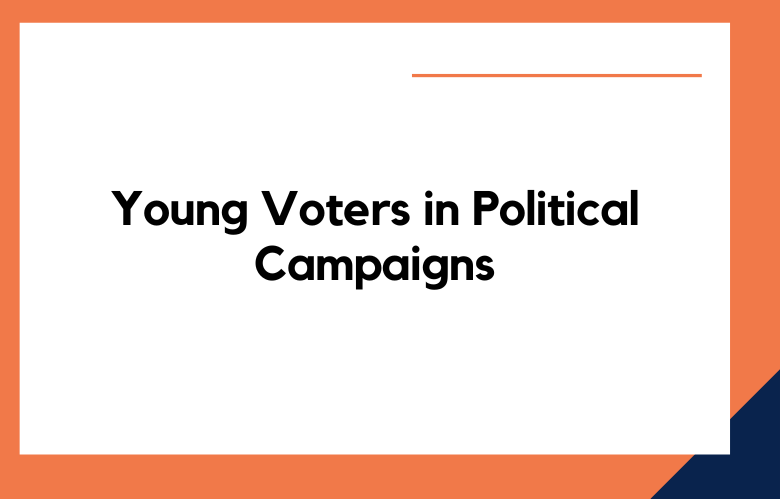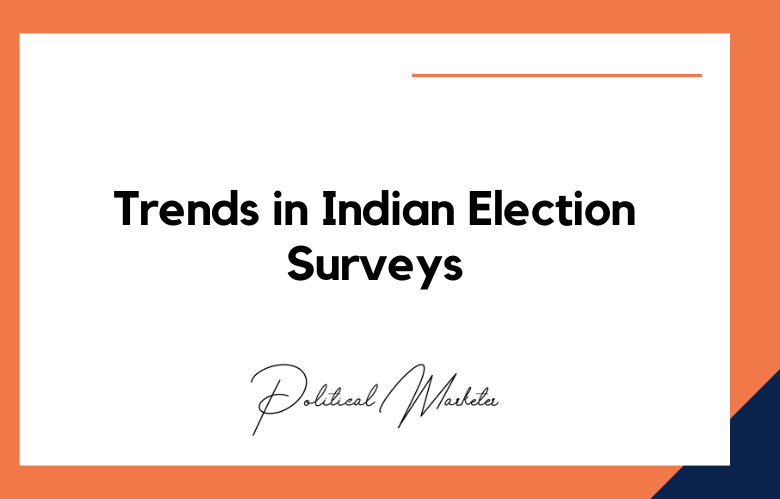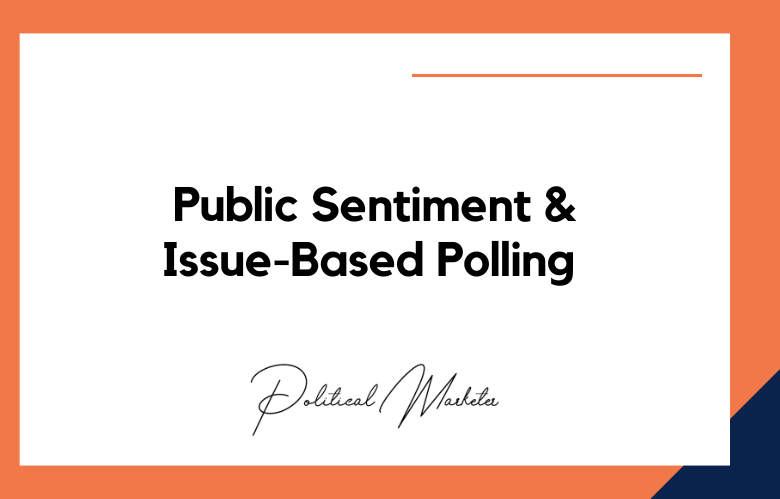Young voters can be a game-changer in political campaigns. The right strategies can drive followers and supporters to a particular candidate and secure a victory. The youth’s enthusiasm and passion can be harnessed into a valuable resource in elections.
However, engaging younger voters is a unique challenge. Traditional campaign methods no longer work as they used to, and new ways to reach them must be explored. This post will discuss strategies to engage young voters and boost their participation.
Strategies to Engage Young Voters in Political Campaigns
Reach Them on Social Media Platforms
Social media is a powerful tool that can be optimized to target young voters. Presidential candidates in the past who effectively utilized it, such as President Obama, showed how social media platforms can be used to galvanize youth support for political campaigns. Younger voters can quickly engage in electoral campaigns by creating a solid social media presence and relatable content.
Make Campaigns More Inclusive
Young voters tend to be more idealistic and look for authentic candidates with a sense of authenticity. Political campaigns should be held in environments that are welcoming and accessible to young people of all races and sexual orientations. Candidates should ensure that their campaigns include all young people, including those who might not be politically active.
Attend Student Events and Forums
Political candidates should attend student events, rallies, and forums. Such places offer an opportunity for politicians to connect with young voters physically. By attending events and forums, you can answer their questions about political issues affecting them directly. By providing real-time interactions, political candidates can show they understand and are willing to solve young people’s issues.
Address Issues that Matter to Young People
Addressing issues that matter to young people during political campaigns is essential. Young voters are passionate about education, environmental issues, equal rights and opportunities, racial and gender equality, and healthcare. Focusing on the policies that address these concerns will help create a sense of urgency and engagement.
Use Enticing Campaign Materials
Using campaign materials that stand out is an excellent way to engage young voters. Usage of catchy slogans, appealing graphics, and data visualizations will be more likely to mobilize young voters into action. Moreover, creating a unique identity that reflects the spirit of the campaign, along with the issues and values that the candidate represents, can attract significant attention among young voters.
Unlocking the Youth Vote: Innovative Strategies for Engaging Young Voters
Today’s youth are the future leaders of tomorrow, yet they are often overlooked in political discourse. With a low voter turnout amongst young voters, it is crucial to implement innovative strategies to engage and empower this demographic. Several successful approaches have unlocked the youth vote in recent years, leading to higher political participation among young adults.
One strategy is leveraging social media platforms like Instagram and TikTok to reach young voters. By producing engaging and informative content, political campaigns can effectively communicate with younger audiences in a language they understand. The use of influencers and celebrities to promote civic engagement has also proven effective, as they can use their large followers to spread awareness about important political issues.
From TikTok to the Ballot Box: Harnessing Social Media for Youth Engagement
Nowadays, social media has become an integral part of our lives, particularly for the younger generation. With platforms like TikTok rapidly gaining popularity, leveraging these channels for youth engagement has become increasingly important. From political activism to grassroots campaigns, social media has become vital for mobilizing and galvanizing young people towards social change.
One of the most significant benefits of social media for youth engagement is its ability to reach a broad and diverse audience, transcending geographical barriers. This has allowed a new generation of activists to emerge, harnessing the power of social media to organize mass protests and advocate for social justice issues. Social media has also provided a platform for new and emerging voices to share their perspectives and ideas, contributing to a more inclusive and dynamic discourse on important issues.
The Power of Peer-to-Peer: Building Grassroots Youth Networks for Political Campaigns
Political campaigns have evolved with technological advancements, particularly with the rise of social media. The use of social media platforms has proven to be effective in terms of reaching out to the youth demographic. However, using peer-to-peer networks is still a prevalent and effective method that political campaigns should utilize.
Peer-to-peer networks refer to the transfer of information, resources, or services between individuals without the reliance on a central authority or intermediaries. This networking method relies on the trust and relationships built between peers, making it a more personal and relatable way to spread information.
In terms of political campaigns, building grassroots youth networks through peer-to-peer methods can be beneficial in several ways. Firstly, it allows young people to connect with like-minded individuals with similar political views. This sense of community is vital for young people who may feel disconnected or discouraged by the political process.
Empowering the Youth: Incorporating Student Activism into Political Campaigns
In today’s society, we witness an increasing number of young people actively engaged in political and social issues. Students are passionate about various causes and seek to make a positive change in their communities through activism. These young activists have the potential to influence political campaigns and shape the direction of local and national policies.
Therefore, political campaigns must recognize the power and potential of student activism. By incorporating student voices into their campaigns, politicians empower youth and gain access to fresh perspectives and innovative ideas. This approach creates a collaborative environment, leading to more effective policy development.
Gamification and Politics: Turning Voting into a Fun and Interactive Experience for Youth
Gamification is a powerful tool that has been widely used in the context of digital media and technology. It involves the application of gaming principles and techniques to non-game contexts to engage people and make their experiences more enjoyable, interactive, and rewarding. In politics, gamification offers a promising approach to overcoming low youth engagement and participation in the electoral process.
The youth demographic has been historically underrepresented in politics, and many factors contribute to this trend, including lack of interest, lack of political education, limited access to information, and a sense of disconnection from the political establishment. Gamification can address some of these barriers by transforming voting into a fun and interactive experience that appeals to young people’s intrinsic motivations and preferences.
Conclusion:
Young people have the power to decide the future. Political candidates are responsible for engaging and empowering the youth by providing them a voice and platform to express their opinions and concerns affecting their lives.
By connecting to young voters through social media, creating inclusive campaign environments, attending student events, addressing critical issues, and using enticing campaigns, election campaigns can increase and strengthen young voters’ participation, fundamentally influencing election outcomes. Through these actions, political candidates can ensure the youth’s engagement and support in every step of their journey to political victory.
Call: +91 9848321284
Email: [email protected]
Frequently Asked Questions (FAQs)
Why is it important to engage young voters in political campaigns?
Young voters represent a significant portion of the electorate and can influence election outcomes, particularly in close races or emerging constituencies.
What are the biggest challenges in connecting with young voters?
Challenges include political apathy, distrust of politicians, short attention spans, and the need for authentic, digital-native communication.
Which platforms are most effective to reach young voters?
Instagram, TikTok, YouTube, WhatsApp, and X (formerly Twitter) are highly effective for reaching and influencing young, mobile-first voters.
What type of content resonates best with young voters?
Short videos, memes, explainer content, personal stories, and interactive posts like polls, Q&As, or challenges tend to perform best.
How can political campaigns use influencers to reach youth audiences?
Partnering with relatable creators or micro-influencers helps build trust, spread campaign messages, and mobilize engagement authentically.
Is humor effective in engaging young voters?
Yes, using satire, political comedy, and meme culture can break the ice and humanize candidates while maintaining message integrity.
How does authenticity impact youth political engagement?
Authentic, transparent, and value-driven messaging builds credibility and fosters stronger emotional connections with young voters.
Should political parties use gamification to engage youth?
Gamified elements like quizzes, digital badges, and competition-based volunteer drives can enhance interest and involvement.
Can live interactions with candidates attract young voters?
Absolutely. Livestreams, Instagram Lives, Reddit AMAs, and YouTube Q&As create opportunities for direct, unscripted engagement.
What role does storytelling play in youth-focused campaigns?
Real-life stories, especially from peers or local community members, can make political issues more relatable and humanize platforms.
Are issue-based campaigns more effective than party-based ones for youth?
Yes, young voters are more likely to engage with campaigns that highlight social justice, climate, education, or employment issues.
How can youth voter registration drives be optimized?
By simplifying the process, integrating mobile registration tools, and promoting deadlines with countdowns or influencers.
How do student ambassadors help political campaigns?
They act as on-ground advocates in colleges and universities, helping spread the message through peer-to-peer influence.
Is short-form video content necessary for youth outreach?
Yes, platforms like Reels, Shorts, and TikTok are essential for delivering concise, high-impact political messages.
How do mobile campaigns boost youth turnout?
Mobile-first strategies using SMS, WhatsApp, and push notifications increase reach, reminders, and action prompts in real time.
Should political campaigns invest in music and culture events?
Yes, sponsoring or appearing at music fests, youth expos, or college fests taps into cultural relevance and visibility.
What tone works best with young voters—formal or casual?
Casual, conversational, and inclusive tones work best—avoiding jargon and condescension while still respecting youth intelligence.
How does visual branding affect youth voter engagement?
Strong, consistent visuals with modern design, inclusive imagery, and platform-specific formatting enhance credibility and recognition.
What’s the role of digital storytelling in motivating first-time voters?
Digital storytelling through testimonials, docu-series, and animation helps demystify the voting process and make it emotionally compelling.
What is the long-term benefit of youth engagement in politics?
Engaging youth early builds a lifelong habit of civic participation, strengthens democratic processes, and diversifies future leadership.











